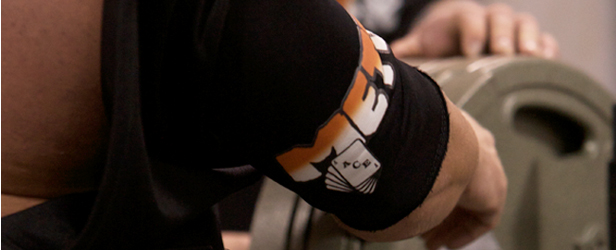
The following research is an investigation into the effectiveness of using bench shirts in powerlifting. For many years, powerlifters have used expensive supportive equipment to improve the total weight lifted for each individual lift. (However, this study focuses solely on the bench press). While lifters often speak about ‘carry over’ in terms of kilos on their individual lifts, to my knowledge no one has collated a randomized number of samples and analyzed the improvements as an expected percentage. Therefore, it was the purpose of this study to address a mean percentage gain of equipped bench press.
Methods
The simple question was asked via Facebook, “What is your raw and equipped max bench (preferred in competition).” Respondents were further asked to confirm if the equipment was single or multi-ply. To these questions fourteen (N=14) Australian Power Lifters replied. After the initial raw data was collected, it was decided that the experiment would exclude females as there were only two respondents—one single-ply, the other multi-ply. In turn, out of the male population, only two reported using multi-ply equipment. Thus, these results were excluded from the analysis. The ten remaining respondents were all based in Australia and had competed across three different federations. To avoid the issues of outliers (those with exceptional or lack of carry over) from this an analysis of percentage, gains were calculated with the highest and lowest numbers excluded from further analysis.
Results
| N=8 | |||
| Raw KG | Equipped KG | Improvement KG | Improvement % |
|
175 |
215 |
40 |
18 |
|
190 |
250 |
60 |
24 |
|
250 |
333 |
83 |
24 |
|
267 |
347 |
80 |
23 |
|
165 |
180 |
15 |
|
|
80 |
120 |
40 |
22 |
|
115 |
180 |
65 |
|
|
185 |
250 |
65 |
26 |
|
235 |
300 |
65 |
21 |
|
95 |
120 |
25 |
20 |
|
Mean =175.7 |
229.5 |
53.8 |
22.25 |
| SD |
0.08 |
||
Discussion and Limitations
This observational study was limited in time and based upon a small sample size obtained by social media. Several factors have not been considered, such as: equipment type and brand, the individual rules of each federation, including referee calls, and regulation to where the bar can touch on the stomach or chest. Furthermore, foot and hip positioning would most likely significantly effect the performance of both raw and equipped bench pressing. Finally, performance enhancing drugs are considered acceptable in some areas of powerlifting but were not considered in this study. As such, these issues should be taken into consideration in future research.
Conclusion
To my knowledge, this is the first time randomized data of this sort has been collected, but there are considerable voids in the research methodology. However, the financial cost of powerlifting equipment should warrant the individual lifter to seek out statistically relevant evidence to support the use of future equipment. The current study found an average 22% increase in bench press performance when using single-ply equipment, and this should be considered when training or competing in future meets.








